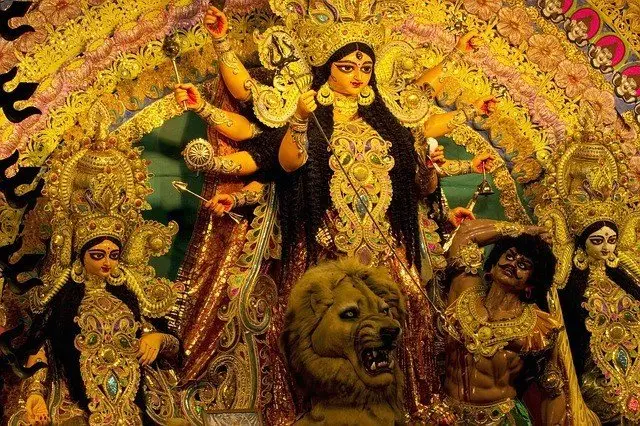
There are some Hindu temples in India where you would find monkeys, dogs, rats, and/or other animals inside the temple. The cow is the highest revered animal for Hindus. Aside from cows, dogs, monkeys, elephants, and other animals are an integral part of Hindu mythology and are associated with different Hindu deities. Most of the animals are given protection in Hinduism except for a few.
An important fact about Hinduism is that it has given high importance to the animals including domestic as well as wild. Bhagavadgita says that the same soul exists in the animals as well as human beings. We all are children of the same God. God never differentiates between an animal and a human being. We are equal to Him.
Animals form an integral part of Hindu customs. Lots of Hindu customs are designed in such a way that they would protect animals.
Zoolatry (Religious worship of animals):
Bail Pola (bullock festival) is widely celebrated in Maharashtra and other parts of India in which bullocks are worshipped and allowed to rest for the whole day.
On the eve of Nag Panchami, snakes are worshipped throughout India. Snakes are not killed on this day. Snakes are closely associated with Lord Shiva. In a temple of Lord Shiva in Marleshwar in Maharashtra, there are hundreds of snakes lying on the road to the temple but there has been no incidence of snakebite for hundreds of years.
On the eve of Vasu Baras in Diwali, cows are worshipped. The cow is the most sacred animal for Hindus. The killing of a cow is considered a great sin and Hindus are prohibited from eating beef.
If a Hindu kills a cat, he has to go to Kashi and donate a small cat made up of gold. Therefore, killing a cat is prohibited in Hinduism.
Animals as carriers of different deities:
Many wild and domestic animals are associated with different Hindu deities. Each deity has been assigned an animal as a carrier, which that deity uses for transportation from one place to another.
Deity Carrier
Indra White elephant
Ganesha Mouse
Shiva Bullock
Dattatreya Cow
Vishnu Eagle
Brahma Swan
Kartikeya Peacock
Durga Tiger or Lion
Deities in animal form:
Lord Ganesha is one of the most popular Hindu deities. Lord Ganesha has the head of an elephant and the body of a human being.
Lord Hanuman is also known as Monkey God. Lord Hanumana helped Lord Rama to fight against King Ravana.
Narasimha is considered as the fourth incarnation of Lord Vishnu and has the head of a lion and body of a man.
In Varah Avatar of Lord Vishnu, he has the head of a wild boar and torso of a man.
Many deities have been depicted in half-animal and half-human form and have been worshipped by Hindus. This automatically creates affection for that animal resulting in the care of the animals.
Vegetarianism:
Though animal sacrifice is a common practice in Hinduism, Hinduism strongly advocates vegetarianism. Non-vegetarian food is considered as Tamasi and is believed to affect our body and thought process. Hindus do not eat meat on some days like Monday, Thursday, and Saturday. Plus, other days like Ganesh Chaturthi, Ekadashi, and on the eve of the festivals eating non-vegetarian food is prohibited. Eating non-veg food is considered a bad Karma.
Animal sacrifice in Hinduism:
Animal sacrifice to a deity is a common practice in Hinduism. It has been there before Indus Valley Civilization. The animals allowed for sacrifice are cocks, He-goats, bison. Other animals are not generally used for sacrifice.
It is believed that in ancient times, cows were also used for sacrifice on special occasions but it is a controversial subject.
Demons in animal form:
In Hindu mythology, there are a handful of stories about the demons depicted as half-beast and half-human. The story of Mahishasur (half-bison and half-human) is very famous in this regard.
sacrifical worshiping is as old as man on earth, it is what man love and cherish as valves that is what pleases him more to offer to GOD.